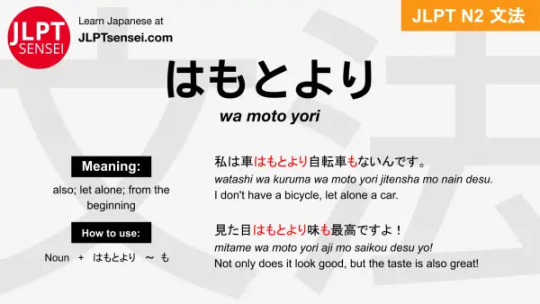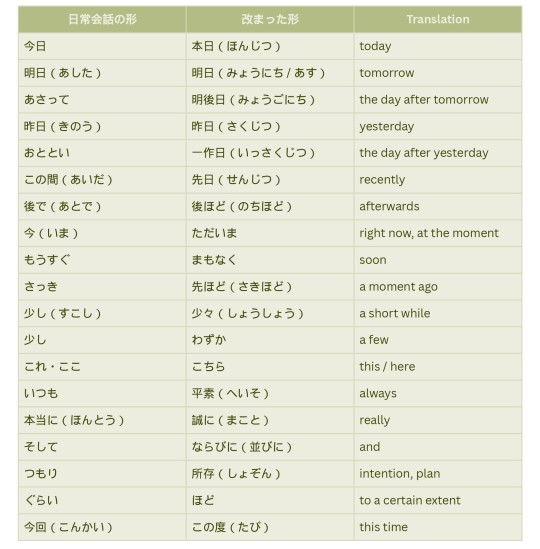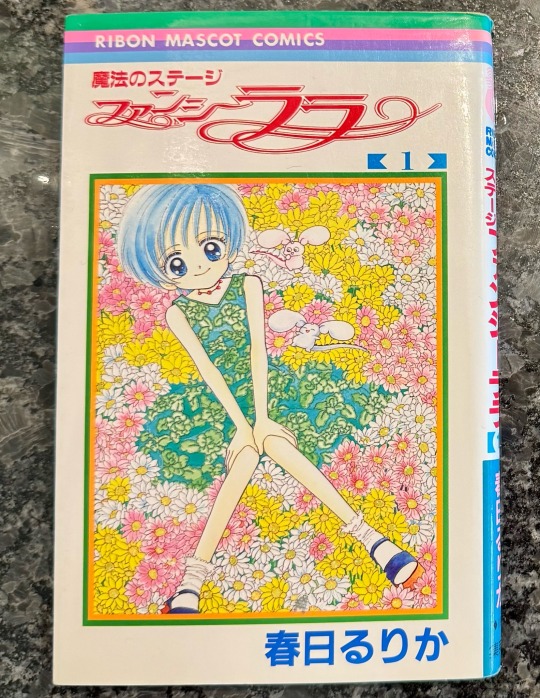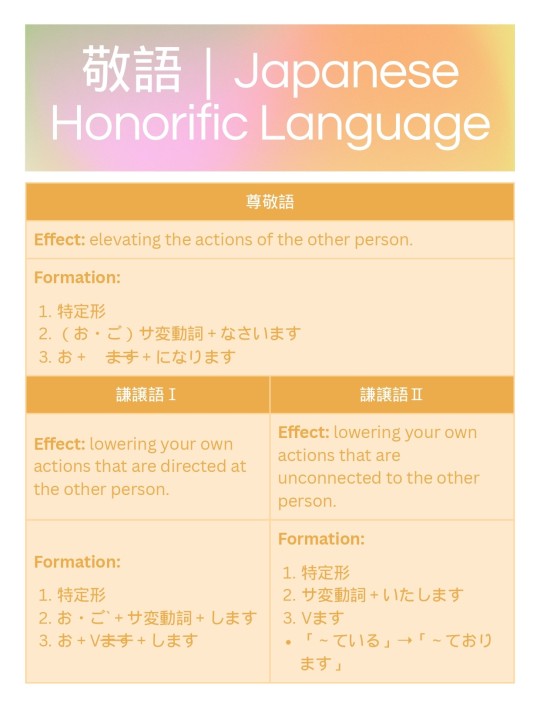#語法
Explore tagged Tumblr posts
Text


she would've told them unlike her canon! version who decided not to be an ally smh
#one piece#trans!sanji#sanji#kiku#yamato#ワンピース#I'm practicing my japanese shhhhhh#(日本語のペラペラ人:俺は文法とか書く方とか間違ったら教えてください😅ありがとうございます)#translation:#Yamato: I'll be able to get as strong as Oden?#Sanji: Probably... 🤔#[meanwhile Kiku is remembering the time in the hot spring]#(Sanji: Nami-chan!!!)#(Nami: Shut up!! The women's bath is supposed to be a peaceful place!)#Kiku: I am also ⚧️ ... o.o#(y'all english speakers had me all to yourselves for a decade it's about time I start to also sometimes make stuff in my next language lol#notably for media *from* that language#same as it made sense to make fan content in english for [american superhero franchise we don't talk abt anymore] back in the day#(happy seasonal reminder that Ren Is Not A Native English Speaker and This Is My 5th Language hi 😅))#while looking up reference for this I learnt that the straps to tie back the kimono sleeves are called tasuki#also I decided yamato get big muscles cause he got them kaido genes in im (I also gave him his dad's young-man-facial hair)#the more I do transition projections for one piece characters while tryna adhere to the style the more I learn that sometimes stylisation#uses bones less as literal determinants for where things go and just kinda exaggerates shapes based on vibes alone instead#meaning trans characters' bones wouldn't literally stay looking the same in that stylisation in the way they do irl#they'd get exaggerated differently based on what the surrounding stuff is doing#I still think oda's transition demonstration when we first met iva was unreasonable even with that in mind tho
2K notes
·
View notes
Text
~はもとより~も
JLPT N2 Grammar
使い方 Noun はもとより ~も
意味 also; let alone; from the beginning
① (positive) also
② (negative) let alone
③ from the beginning, all along, of course

例文
① (positive) also
キャベツはサラダで食べるのはもとより、炒めても美味しい。 キャベツ は サラダ で たべる の はもとより、いためて も おいしい。 Cabbage is of course good in salad, but it is also good in stir-fry.
② (negative) let alone
私が生まれた村は、電車はもとより、バスも全然ない。 わたし が うまれた むら は、でんしゃ はもとより、バス も ぜんぜん ない。 In the village I was born in, there are not even trains, let alone buses.
③ from the beginning, all along, of course
僕はもとより知っていた。 ぼく はもとより しって いた。 I knew from the very beginning.
JLPT先生
#日本語#japanese#japanese language#japanese langblr#japanese studyblr#langblr#studyblr#文法#japanese grammar#jlpt n2#tokidokitokyo#tdtstudy
52 notes
·
View notes
Text
改まった形|Polite Forms
In formal settings like in a business meeting or at a public gathering some words are switched with politer forms. You often hear them when somebody is giving a speech, holding a presentation or on TV. But they appear in written form as well, especially in business context. Basically, everywhere where keigo is used, it is also expected to apply politer forms.

#文法#敬語#japanese langblr#langblr#studyblr#study movitation#learning japanese#japanese vocabulary#japan#japanese#study blog#study notes#language blog#keigo#japanese studyblr#japanese grammar#japanese language#日本語#日本語の勉強#nihongo
382 notes
·
View notes
Text
8月26日カードキャプターさくらの新しい単語

原因 (げんいん) - cause, origin, source
閉鎖 (へいさ) - closing, closure, shutdown, lockout
ひとまとめ - bundle, bunch, pack
放課後 (ほうかご) - after school
冷凍庫 (れいとうこ) - freezer
校舎 (こうしゃ) - school building, schoolhouse
落ち (おち) - slip, omission; outcome, final result; punchline (of a joke)
根性 (こんじょう) - willpower, grit, determination, guts; character, nature
合わせる (あわせる) - to match (a quality of something); to join together, to unite, to add up (among other meanings)
ぶつける - to hit something, to strike, to crash into; to throw; to express
隠れる (かく��る) - to hide, to be hidden, to conceal oneself
固める (かためる) - to harden, to freeze, to solidify, to strengthen (among other meanings)
確かめる (たしかめる) - to ascertain, to check, to make sure
きつい - tough, demanding, harsh; forceful, determined, fierce; tight, constricting
バラバラ - scattered, disperse, loose, in pieces
バッチリ - perfectly; thoroughly, completely, sufficiently
役に立つ (やくにたつ) - to be helpful, to be useful
「お役に立ててよかったですわ。」
思いつく (おもいつく) - to think of, to come to one’s mind, to be hit with an idea; to remember or recall
「しかし、よう思いついたな。」
お陰で (おかげで) - thanks to…, owing to…, because of…
「雪兎さんのおかげよ。」
#紙鶴 💌#learning japanese#日本語#japanese#japanese langblr#japanese studyblr#japanese vocabulary#単語 ⭐️#文法 🌸#漫画 🎀
56 notes
·
View notes
Text
「こそあど」- The Ko-So-A-Do Words - JLPT N5 Grammar ┃ Genki Lesson 2
youtube
11 notes
·
View notes
Text

I consider Magic Stage Fancy Lala (魔法のステージ・ファンシーララ) to be a Showa magical girl series, even though the TV anime and this manga came out later, in the early Heisei。But the original OVA, Harbor Light Story: From Fashion Lala (ハーバーライト物語 ファッションララより), which was the character’s debut, came out in 1988.
#魔法のステージ・ファンシーララ#magic stage fancy lala#fancy Lala#fashion Lala#ハーバーライト物語 ファッションララより#ハーバーライト物語ファッションララより#Harbor Light Story: From Fashion Lala#Harbor Light Monogatari: Fashion Lala yori#昭和#showa era#魔法少女#magical girl#majokko#魔女っ子#retro shoujo#retro shojo#comics#manga#heisei era#heisei
13 notes
·
View notes
Text
Japanese JLPT N3 Study Post #3
Welcome to my third study post, everyone! Today, I'll be making notes on the grammar point 合う to mean "Do something together." So, let's get into it!

Grammar Point 合う/あう (au)
Meaning: "Do something together."
How to use it
Verb ます stem + 合う/あう
For those wondering what "Verb Stem" means, essentially, it's the conjugation of a verb into ます form, where you then remove ます。I'll make this clear, when I write out the examples. I will strike through ます where I remove it, to assist others with understanding how "Verb Stems" in Japanese work.
Examples
私達はその件について話します合いましょう。
私達はその件について話し合いましょう。
Let's discuss together regarding that matter.

2人は愛します合っている。
2人は愛し合っている。
Those two are in love with each other.

その2人はいつも競います合っている。
その2人はいつも競い合っている。
Those 2 are always competing with each other.

合うvs会う
Now, this isn't explicitly related to this grammar point, but I know this is something I always used to have confusion over, so I thought I'd include a point on it. These two words are both spelt and pronounced the same way, but their meaning is different. I'll explain this down below.
会う (au)
Commonly used to mean "to meet" or "to see someone."
This word uses the kanji 会, which conveys the idea of "coming together."
It means to physically meet someone/a group of people.
Example
友達に会う。
To meet a friend.

合う (au)
合う means "to match", "to fit", or "to go well together".
This word uses the kanji 合, which conveys the idea of harmony or agreement.
合う is used when talking about things that are compatible, or people who get along well together.
Example
この靴は私の服に合う。
These shoes match my clothes.

彼と彼女は気が合う。
They get along well together.

I hope this helps clarify the difference between the two!
Twisted Wonderland Notes
Unfortunately, I haven't got much done on the translation of Volume 1 of the Light Novel. I ended up being far busier over the weekend than I had anticipated. I'm hoping to get started on it this week, so if you're looking forward to that, stay tuned!

References
I am unable to embed this link, but hopefully you can just copy and paste it, if you want to read more on 会うvs合う。
Previous Posts
If you want to take a look at my previous grammar posts, here they are!
Conclusion
Thank you for reading, and I hope this was helpful! As always, feel free to write any suggestions down in the comments, or any other grammar points you would like me to break down!
#japanese#japanese language#language stuff#language learning#japanese learning#study notes#language#日本語#日本語の勉強#日本語文法#twisted wonderland#my translations
22 notes
·
View notes
Text
When love becomes a diagonal, it may intersect at one point but can never extend into a line.
一旦愛如斜角,雖然交會於一點,但卻無法延續成一條線。
youtube
#斜角#LoveAtAnAngle#情歌#SongOfLove#IntersectingFates#Diagonal Angle#silent gap#不同的角度#無法平行#倔強#不對稱的符號#命運的語言#孤單的光#找不到方向#一道光#Angolo Diagonale#youtube#spotify#spotify playlist#love#music#ai music#ai world#audiomack#apple music#itune#Youtube
9 notes
·
View notes
Text
Grammar Review: はず
Please note that I am still a beginner in Japanese and the sample sentences are my own, so they may contain mistakes or sound unnatural. If you have any corrections or feedback, then please tell me so I can fix it!
Verb (casual) + はず (+です) Adjective (dictionary form) + はず (+です) Noun + の + はず (+です)
Must, should, is supposed to. Indicates what the speaker expects.
マンチェスターシチはプレミアリーグを勝つはず。Manchester City should win the Premier League.
子どもに教えることは楽しいはず。Teaching children must be fun.
毎日勉強していたから、テストは簡単なはず。Because I've been studying every day, the test should be easy.
スーツを着ている男の人は課長のはずです。The man in the suit must be the manager.
Past tense + はず (present tense): I'm sure X happened Present tense + はず (past tense): I was sure X would happen/X was supposed to happen:
テストが簡単だったはず。The test should have been easy (I didn't take the test, but I expect it was easy)
テストが簡単なはずだった。The test should have been easy (I expected the test to be easy, but it wasn't)
You don't use はず to mean 'should' when giving advice. Instead, use 〜た方がいいよ
疲れたら、寝た方がいいよ!If you're tired, you should sleep.
You don't use はず to mean 'must' as in 'have to'. This is a separate grammar point that would need its own post to explain.
Please let me know if I've made any mistakes!
#japanese#japanese langblr#learning japanese#日本語#japanese grammar#文法#bonus: i learned the word 朝飯前 and asked my japanese friend how to use it with はず#and she said you never use it with things you're unsure about. only things that are 100% certain. so you can't use it with はず!
45 notes
·
View notes
Text

#yokai#妖怪#spirits#幽霊#folklore#伝説#monsters#怪物#myth#���話#tales#物語#supernatural#超自然#haunt#幽界#mystery#謎#ancient#古代#magic#魔法#creature#生き物#legendary#伝説の#enchant#魅了する#spooky#怖い
19 notes
·
View notes
Text
2025年5月3日(土)

先月から始まった<Visa割>キャンペーン、ApplePayで¥1,000以上利用するとルーレットが回せる。前回は100円のキャッシュバックとなったが、今朝の2回目はなんと500円をゲットした。恐らく新開地喜楽館までの往復交通費(¥1,360)が対象となったのだろうが、これは大きい。ポイ活、もう少し頑張ろう。

5時起床。
日誌書く。
6時、彼女が起床。

2階に上がって日めくりをめくる、今日は<憲法記念日>だ、大事にしなければ。
洗濯開始。

朝食を頂く。
洗濯物を干す。
珈琲を淹れる。
セブンイレブンで、10月24日(金)の<三代目露の五郎襲名披露公演のチケットを発券する。いつ���ならタッチ決済で購入するのだが、今回はクレジットカードを差し込んで暗証番号を入力しなければならない。なるほど、金額が高くなるとこうなるのだな。幸い、最前列で嬉しい。

コレモ七条店へ回って買物、今日は食パンが安いのだ。
安売りの鶏ムネ肉ジャンボパックを今日中に調理しなければならない、あれこれレシピ検索。
ランチ、息子たちには焼き飯、私たちは残りもの入り麻婆豆腐。

録画番組視聴、再放送だが何度観ても<名人>に違いない。
MQJ(メモリアル・キルト・ジャパン)のニュースレター作成、ツレアイの原稿を待って編集開始、印刷は明日の作業に。
発送用に宛名ラベルを打ち出す。

今夜は5人で食事、蒸し鶏・じゃがベーコン・鶏ムネ肉のバター醤油仕立て、レタスとトマト、スパークリングワインで乾杯。

長男が帰ってから、<土曜は寅さん>を楽しむ。 葵祭でにぎわう京都で、寅さんが鼻緒を直してあげた老人は、なんと人間国宝の陶芸家・加納作次郎(片岡仁左衛門)だった。作次郎の家には、夫に先立たれ、娘を丹後の実家に預けて働いている、美しいかがり(いしだあゆみ)がいた。彼女は心を寄せていた男性の結婚を知り、仕事を辞め帰郷する。彼女をなぐさめようと寅さんが訪ねるが… 寅さんがマドンナに惚れられアタックされてしまう。いしだあゆみ演じるかがりは、これまでシリーズにはなかった「男と女の関係」という具体的なモーションを寅さんに働きかける。丹後半島の伊根のかがりの家で、寅さんの寝床にそっと彼女が忍びよるシーンは、寅さんならずともドギマギしてしまう。清楚で内気な女性に秘められた情熱。とらやを訪ねたかがりが、寅さんを鎌倉へのデートに誘う。しかし、満男が付き添いでやってきて…。歌舞伎俳優の片岡仁左衛門演じる加納作次郎は、誰しも尊敬する人間国宝、しかし、寅さんにとっては、ただの爺さんという感覚。明るい笑いのなかに、ドキリとする描写を忍ばせる大人の物語。
片付け、入浴、体重は2日で500g増。
パジャマに着替え、日誌は明日のことにして、布団の中で桂米朝「貧乏花見」を聴く。

歩数は足りないが、なんとか3つのリング完成。
3 notes
·
View notes
Text

Environmental protection involves not only purifying the mountains, waters, and land, but also purifying our hearts. 做環保,除了淨山、淨海、淨大地之外,也要淨心田。
5 notes
·
View notes
Text
JLPT N2 Grammar げ
Meaning: looks like, seems like, appears to be
Note: ~げ becomes a な-adjective
な-adjective → remove な
入学式の朝、息���はとても不安げだったが、学校から帰ってくると、明るい表情だった。
にゅうがくしき の あさ、むすこ は とても ふあんげ だった が、がっこう から かえって くる と、あかるい ひょうじょう だった。
On the morning of the school entrance ceremony, my son looked nervous, but when he returned home from school, he had a cheerful expression.
い-adjective → remove い (irregular: いい/よい → よさ)
あの人は寂しげな目をしている。
あの ひと は さびしげ な め を して いる。
That person has a lonely look in their eyes.
Verb → (stem form) remove ます
ずいぶん、自信ありげだね。
ずいぶん、じしん ありげ だね。
You seem very confident.
Verb → (tai form) remove い
あの子はケーキを食べたげな顔をしている。
あの こ は ケーキ を たべたげ な かお を して いる。
That child has a look on their face like they want to eat the cake.
Noun (very limited)
お客さんに大人げない態度をとってしまった。
おきゃくさん に おとなげ ない たいど を とって しまった。
I took an immature attitude with the customer.
#日本語#japanese#japanese language#japanese langblr#japanese studyblr#langblr#studyblr#japanese grammar#文法#jlpt n2#げ#tokidokitokyo#tdtstudy
48 notes
·
View notes
Text
敬語の5分類|The 5 Types of keigo
In the Japanese language it is possible to show respect towards another person by replacing words, mostly verbs, with politer equivalents. This can be done by using elevating expressions for the actions of your superior or degrading expressions for your own actions.

Overview: Verb Formation Rules for sonkeigo 尊敬語, kenjōgo I 謙譲語Ⅰ and kenjōgo II 謙譲語Ⅱ (also known as teichōgo 丁重語).
In a guideline released by the Japanese Agency for Cultural Affairs in the year 2007 keigo has been divided into five types: 尊敬語・謙譲語Ⅰ・謙譲語Ⅱ(丁重語)・丁寧語・美化語. The first three types demonstrate the most complex rules, hence why I summarized them in the chart above for a quick overview. Hereafter, you can find thorough introductions to each type.
尊敬語|Respectful Language
Sonkeigo is the most basic method to pay special respect towards a teacher, a superior or a client. This can be done by switching the verb (refering to the action of your superior) with its passive form.
e.g. 読みます → 読まれます
However, the degree of politeness isn't that high. Hence, it is important to learn the following formation rules as well:
1)特定形 |Special forms
Some verbs have a fixed forms. If a verb has a special form it is to be used.¹
e.g. いる・行く・来る → いらっしゃいます
2)サ変動詞+なさいます
In this context サ変動詞 refers to nominal verbs. Basically, nouns that can be turned into verbs by adding する. It is possible to add お or ご infront of the verb but it can be also omitted if unsure which prefix is the right one.
e.g. 出発する → (ご)出発なさいます
3)お+Ⅴます+になります
This formation rule is for all verbs that do not belong into either of the two categories above. Omitting ます leaves the so-called renyōkei 連用形 or conjunctive form of the verb. Here, the prefix added is always お.
e.g. 待ちます → お待ちになります
It is not uncommon to apply this formation rule to サ変動詞 as well. Depending on the nominal verb お needs to be changed to ご.
e.g. 参加する → ご参加になります
However, there are exceptions. Some nominal verbs are not idiomatic and end up sounding unnatural to native ears.
e.g. 運転する → ご運転になります ✕ 運転する → 運転なさいます 〇
謙譲語 Ⅰ|Humble Language I
Kenjōgo I + II have the opposite effect of sonkeigo. They degrade one's status and are therefore applied only to your own actions or the actions of someone from your inner circle (e.g. a co-worker, or a family member).
In contrast to kenjōgo II, kenjōgo I is used when your action (or the action of someone from your circle) is directed at the person you want to pay respect to. It is also used when you do something for said person.
The formation rules are as listed below:
1)特定形 |Special forms
Some verbs have a fixed forms. If a verb has a special form it is to be used.¹
e.g. 言う → 申し上げます
The translation would be "saying sth. to sb." or "telling sb. sth." implying that your action is directed at the person you want to pay respect to.
2)お・ご+サ変動詞+します
Again, there are some verbs that sound unnatural when this formation is applied.
e.g. ご運転します ✕
In this case, you can formulate the sentence with ~させていただきます or switch to kenjōgo II.
e.g. 運転させていただきます 〇 運転いたします 〇
Note that, depending on the situation ~させていただきます might give of the impression that you are putting yourself down too much. This can result in making your counterpart feel uncomfortable.
3)お+Ⅴます+します
This formation rule is for all verbs that do not belong into either of the two categories above. Omitting ます leaves the so-called renyōkei 連用形 or conjunctive form of the verb. Here, the prefix added is always お.
e.g. 伝える → お伝えします
謙譲語 Ⅱ|Humble Language II
Kenjōgo II is used when your own action is unconnected to the person you want to pay respect to. Therefore, this type of language can often be found in anouncements, news reports or broadcasts elevating its audience. At train stations one often repeated phrase is:
e.g. もうすぐ電車が来る → まもなく電車が参ります
In the example above you can see that not only the verb has been switched with a politer equivalent, but the adverb as well. There are many words that can be switched with politer versions. Unlike verbs, they do not need to be inflected and can be studied like regular vocabulary.
It can also be pointed out that the action does not have to be conducted by the speaker, but can be an object (like in the example above) or a third party as well.
The formation rules are:
1)特定形
Some verbs have a fixed forms. If a verb has a special form it is to be used.¹
e.g. 言う → 申します (as in 私は◯◯と申します)
When introducing yourself you simly "say" or "state" your name. This is not considered an action that is directed at the person you want to pay respect to, hence it falls into the category of kenjōgo II.
2)サ変動詞+いたします
e.g. 応募する → 応募いたします
3)丁寧語
For all verbs that do not fall under the categories above, teineigo is used, or in other words the です・ます form.
e.g. 話す → 話します
In case the ~ている form is used, the degree of politeness can be elevated by replacing it with ~ております which is the special form of いる.
丁寧語|Polite Language
Teineigo is the neutral polite language. You're probably already familiar with this one, since this is the most foolproof way of speaking politely due to its absence of any kind of seesaw principle. It is used everywhere outside of your circle of friends and the safest way to talk to strangers. However, in certain situations it is expected to raise the level of politeness.
e.g. 聞く → 聞きます
美化語|Refined Language
There is a certain number of words, especially nouns, that can be turned into more elegant sounding versions. It can be easily understood by just looking at some examples.
e.g. 金 → お金 酒 → お酒 料理 → ご料理 米 → お米 散歩 → お散歩
Adding the respective prefix お or ご takes away the roughness of a word. This, however, can only be done with a few selected words. Refined words are commonly used in both formal and informal speech.
‾‾‾‾‾‾‾‾‾‾‾‾‾‾‾‾‾‾‾‾‾‾‾‾‾‾‾‾‾‾‾‾‾‾‾‾‾‾‾‾‾‾‾‾‾‾
¹ I compiled all special forms 特定形 that you need to know in this post: 敬語の特定形|Keigo: Special Verb Forms.
#文法#敬語#japanese langblr#langblr#studyblr#study movitation#learning japanese#japanese vocabulary#study aesthetic#light academia#japan#japanese#study blog#study notes#language blog#language#lingusitics#keigo#study motivation#studyspo#japanese studyblr#japanese grammar#japanese language#japanese studyspo#日本語#日本語の勉強#nihongo#learn japanese
255 notes
·
View notes